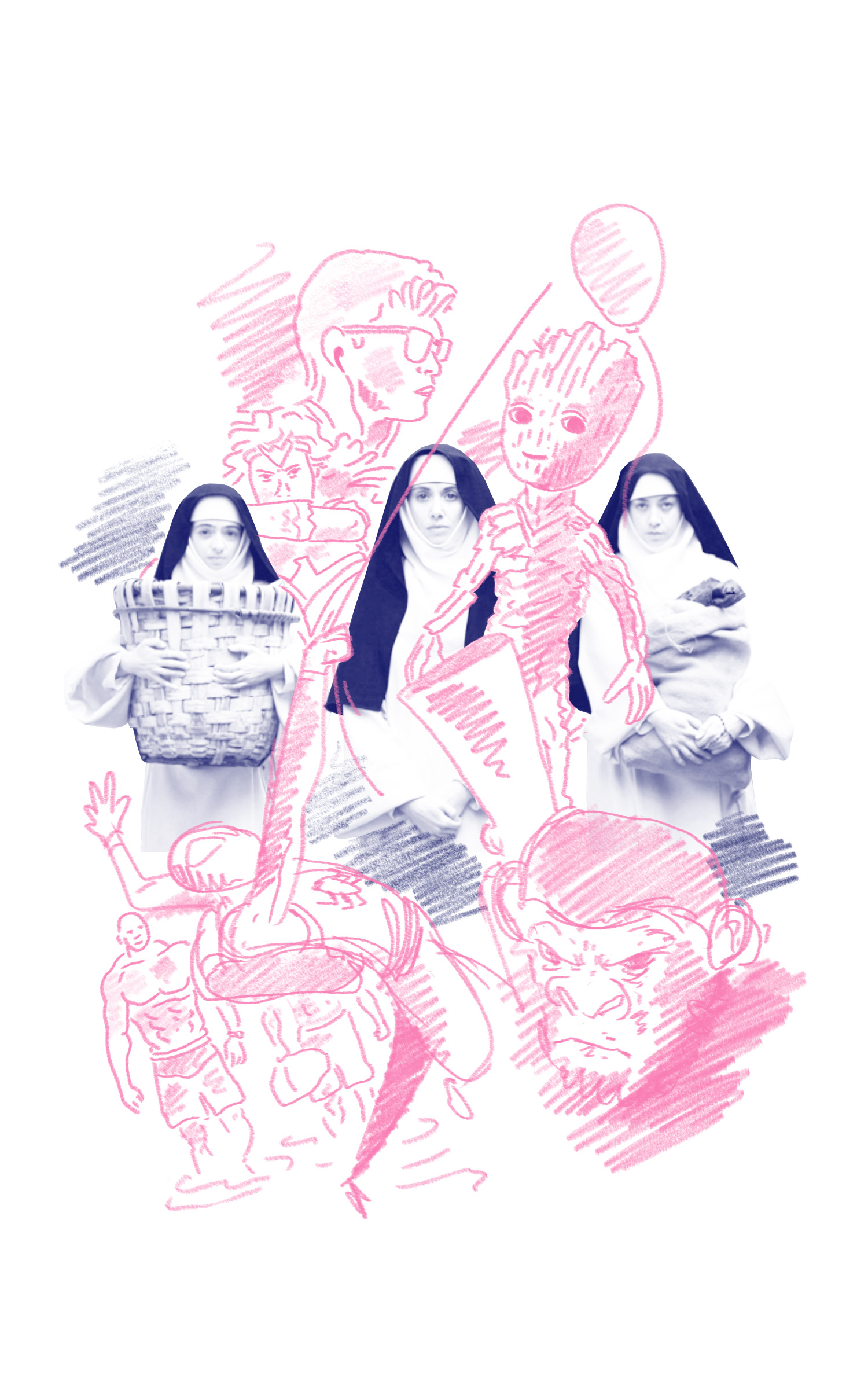
Illustration by Rohan McDonald
When someone says “summer comedy movie,” the first thing to come to mind isn’t “cinematic adaptation of 14th century Italian literature.” But Jeff Baena pulled that very thing off with “The Little Hours,” which was one of the funniest movies of the summer and is coming to Netflix later this month.
Inspired by “The Decameron,” a collection of novellas written by Giovanni Boccaccio in 1353, this unlikely premise for a comedy becomes, in Baena’s hands, an absurd, hilarious, cameo-filled romp. Known for writing “I Heart Huckabees” and “Life After Beth” (another Aubrey Plaza film), Baena manages to wholeheartedly commit to an unlikely comedic premise. Banea embraces the strengths of his cast: “The Little Hours” stars Aubrey Plaza (“Parks & Recreation”), Alison Brie (“Community”), and Kate Micucci (“Garfunkel & Oates”) as three nuns living their lives in the early 14th century in the Italian countryside.
The film follows the lives of Alessandra (Brie), Ginevra (Miccuci), and Fernanda (Plaza) in a nunnery presided over by John C. Reilly’s Father Tommasso and Molly Shannon’s Sister Marea. Brie, Miccuci, and Plaza are all hilarious as three very different, cloistered young women who, after chasing off the convent’s handyman with their varied abuses, encounter the allegedly deaf/mute, Massetto (Dave Franco). Massetto has taken on the convent’s landscaping duties in an attempt to hide from his former master (Nick Offerman). This master wants Massetto dead because Massetto slept with his wife, (played by a delightfully sarcastic Lauren Weedman from HBO’s “Looking.”) From there, the movie spirals off in increasingly absurd and comical ways.
Fans of “Monty Python and the Holy Grail” will enjoy The Little Hours.” The film is similar to the ‘70s comedic masterpiece, as both manage to bring a contemporary and hilarious vernacular to their historical subject matter. However, “Little Hours” has more of a narrative structure than the sketch-driven “Holy Grail.”
Baena allows his cast to embrace a playful approach to the material. With such powerhouse comedic talent, allowing them to improvise the majority of their lines was definitely a smart choice.
Female-led comedies are happening more often, but few manage to achieve what “The Little Hours” does: Amidst all of the laughs, there are discussions of sexual identity, religion, guilt, sin, humanity, female agency, and sisterhood.
Some might argue that examining such themes in a comedic film might be reading into it a bit too deeply. However, to ignore the presence of such themes would be a disservice to the movie as a whole, taking its merits for granted.
One of the young nuns struggles with her attraction to other women; another seeks power and agency beyond the church that stifles her. Another finds herself chafing at the societal limitations of being unable to marry who she’d like, especially when marriage and the nunnery are her only two options. All of these women, as well as other female characters, are presented as complex, flawed, and, interesting. Usually, when nuns are portrayed in the media, particularly in comedies (the “Sister Act” movies notwithstanding), they’re usually minimized to a sight gag, devout, in habits, with few other defining characteristics. Instead of embracing stereotypes, “The Little Hours” embraces the complexities of women of faith, and it’s extremely refreshing.
All of this is not to say that the film takes itself particularly seriously. On the contrary, Baena is able to fold these considerations in with a subversively overt sense of humor, a feat to be sure.
As a 14th century period piece based on a source material actually written in the 14th century, “The Little Hours” manages to recontextualize viewers preconceived notions of life in the Middle Ages. This doesn’t mean that the film is 100 percent historically accurate: Banea manages to juxtapose the historical context against modern speech patterns and an uproariously current sense of humor. Ultimately, this layered mise-en-scène of contemporary ideologies and medieval religiosity reminds audiences that, time period and field of profession/religious affiliation aside, people are people and funny is funny.


















